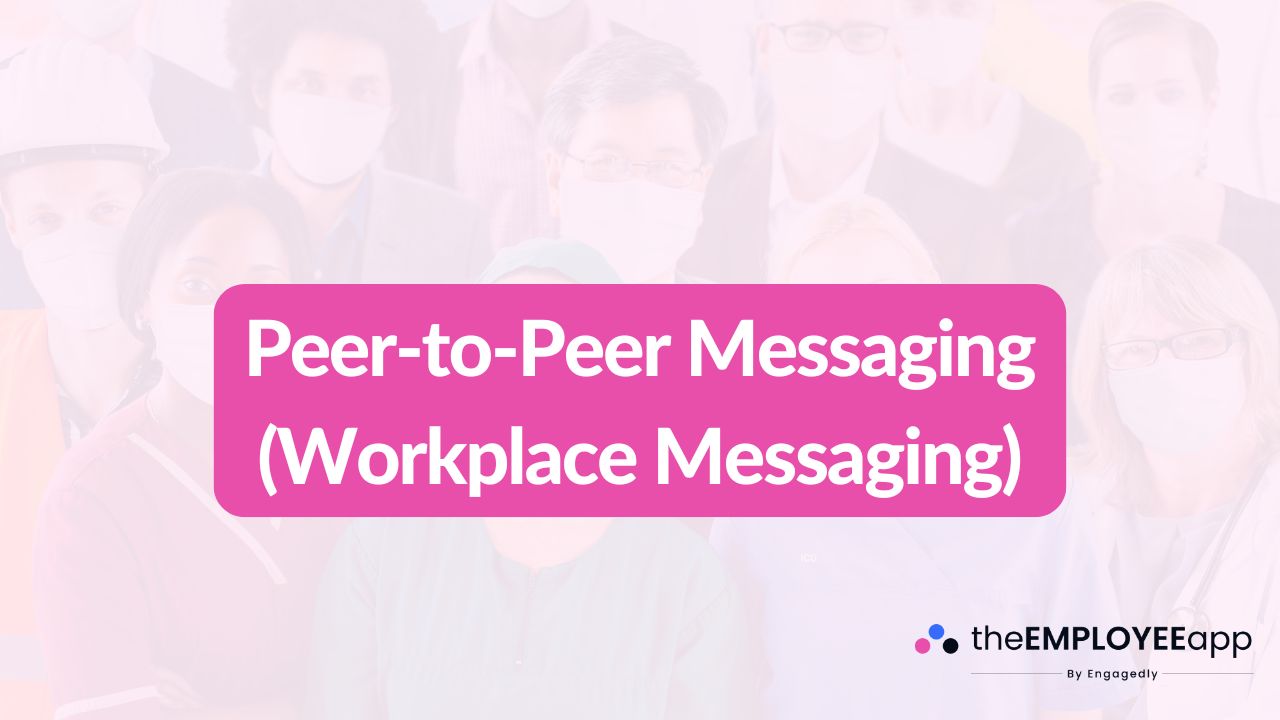
Peer-to-Peer Messaging (Workplace Messaging)
Peer-to-peer messaging (workplace messaging) is the direct exchange of messages between employees, typically through digital platforms or workplace apps. Unlike company-wide announcements or group chats, peer-to-peer messaging allows individuals to communicate privately and instantly. It is one of the most widely used forms of workplace communication, offering speed, convenience, and a personal connection that fosters collaboration.
In a modern workplace, where teams are often distributed across different offices, cities, or even countries, peer-to-peer messaging has become essential. It provides employees with the ability to ask quick questions, share files, or provide immediate feedback without waiting for formal email responses or meetings. This type of communication mimics the natural back-and-forth of in-person conversations, bringing a sense of immediacy and efficiency to digital work environments.
Why Peer-to-Peer Messaging Matters in the Workplace
Strong communication is at the heart of productive organizations. Peer-to-peer messaging empowers employees to connect directly, eliminating bottlenecks that can arise when messages must travel through formal channels. This form of messaging supports faster decision-making, improves problem-solving, and reduces delays in projects.
It also plays a role in employee engagement and culture. Direct messaging allows peers to celebrate achievements, recognize contributions, or simply check in on each other. These small, personal interactions build stronger workplace relationships, even in remote or hybrid settings.
Key Features of Peer-to-Peer Messaging Tools
Workplace messaging platforms often include specific features that make peer-to-peer communication effective:
Real-time messaging: Instant delivery and response keep conversations fluid.
File and media sharing: Employees can share documents, images, or links within the chat.
Presence indicators: “Available,” “busy,” or “away” statuses provide context for responsiveness.
Searchable history: Previous conversations can be searched for quick reference.
Mobile accessibility: Apps ensure employees can message from anywhere, especially valuable for frontline or deskless workers.
Security and compliance: Encryption and data policies protect sensitive business information.
Benefits of Peer-to-Peer Messaging
Faster communication: Employees can bypass long email threads for quick answers.
Collaboration made easy: Direct messaging fosters teamwork across departments and locations.
Increased productivity: Employees spend less time waiting for responses and more time acting on information.
Stronger connections: One-to-one messaging humanizes digital communication, helping employees feel connected.
Adaptability for remote work: Messaging keeps distributed teams aligned and engaged.
Best Practices for Effective Workplace Messaging
Encourage professionalism: Even in casual formats, peer-to-peer messages should remain respectful and work-focused.
Avoid overuse: While instant, excessive messaging can distract. Encourage thoughtful, purposeful communication.
Set boundaries: Employees should respect work-life balance by limiting non-urgent messages outside working hours.
Integrate with other tools: Messaging platforms should complement other workplace systems, such as document storage or task management tools.
Provide training: Ensure employees understand how to use messaging features efficiently and securely.
The Role of Peer-to-Peer Messaging in Workplace Culture
Beyond logistics, peer-to-peer messaging contributes to building culture and belonging. Quick notes of appreciation, friendly check-ins, or celebrating team wins strengthen relationships. For new hires, direct messaging is a valuable onboarding tool, giving them a quick way to ask questions and feel supported by colleagues.
It also reduces isolation in remote and frontline roles, helping employees feel connected to the organization, even if they rarely step into a physical office. When communication flows freely, employees feel more engaged, valued, and motivated.
The Future of Peer-to-Peer Messaging
As technology evolves, peer-to-peer messaging is expected to become smarter and more integrated. Features like translation tools, AI-assisted suggestions, and advanced security will make communication even more seamless. Messaging will likely continue to merge with other collaboration tools, such as video conferencing, project management, and file sharing, creating unified hubs for workplace productivity.
In conclusion, peer-to-peer messaging (workplace messaging) is a vital component of modern communication strategies. It enables employees to collaborate in real time, strengthens workplace culture, and keeps organizations agile in fast-changing environments. By adopting best practices and leveraging secure, user-friendly platforms, companies can ensure peer-to-peer messaging drives both productivity and stronger employee connections.
